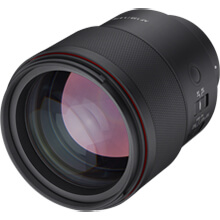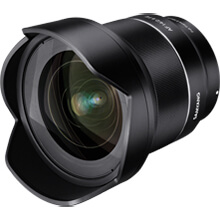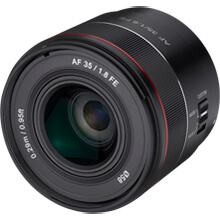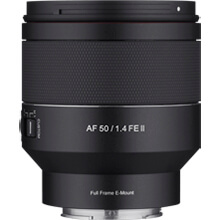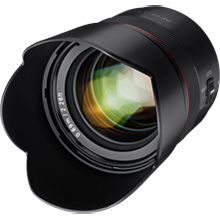
Creating mouth-watering food photography
By Shiv Gilmore | Digital Marketing Assistant, Holdan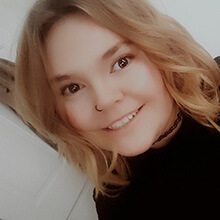
Whether you're a budding professional food photographer or just want to up your Instagram game with some posh nosh, there's an array of tips and tricks that you can use to improve and develop your skills.
That’s why we have teamed up with Holdan Ambassador and commercial food photographer Nic Taylor to create this comprehensive guide on food photography to take your portfolio to the next level!
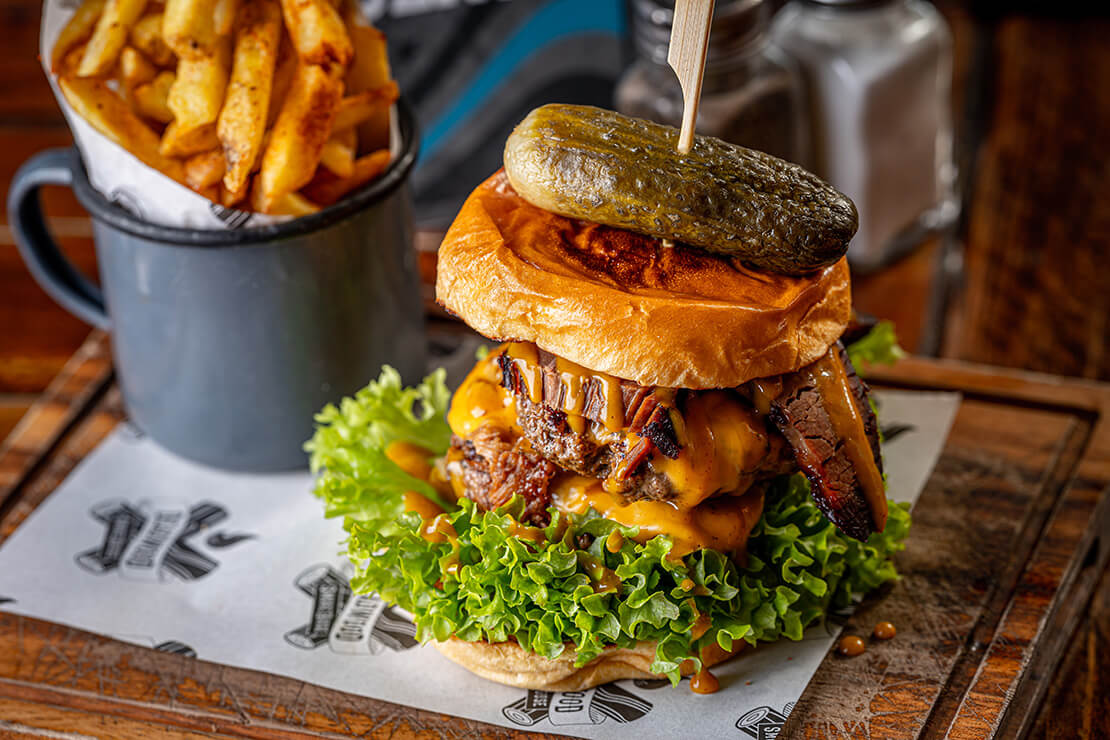
What is food photography?
You might just think that food photography is simply taking snaps of your dinner. However, with any creative medium, a lot more goes into creating the most iconic mouth-watering, food envy photos than just pointing your camera at a plate of food.
Food photography is now an art form in itself, giving a whole new and different dimension to the food we eat. To use the quote “we eat with our eyes” is very much the truth – food photography is all around us. You can usually find examples in restaurants, menus, cookbooks, advertisements and of course food packaging. It can influence our choice of what we eat, the reputation of a restaurant and the quality of food before we even taste it.
About Nic Taylor
Nic is a commercial photographer based in Northwest England but frequently travels throughout the UK for various photographing projects. He specialises in photographing food, drinks, and interiors and has worked with brands such as Ooni (Pizza Ovens), BOL Foods, Coconut Collaborative, LLaeth Y Llan, Paul UK, Browns Brasserie, La Tasca and Wildwood restaurants to name a few.
His favourite food is pizza and he's passionate about making his own from scratch ever since working with Ooni and now owns his own pizza oven! Proving that being part of the food industry isn’t just a job but a whole lifestyle.
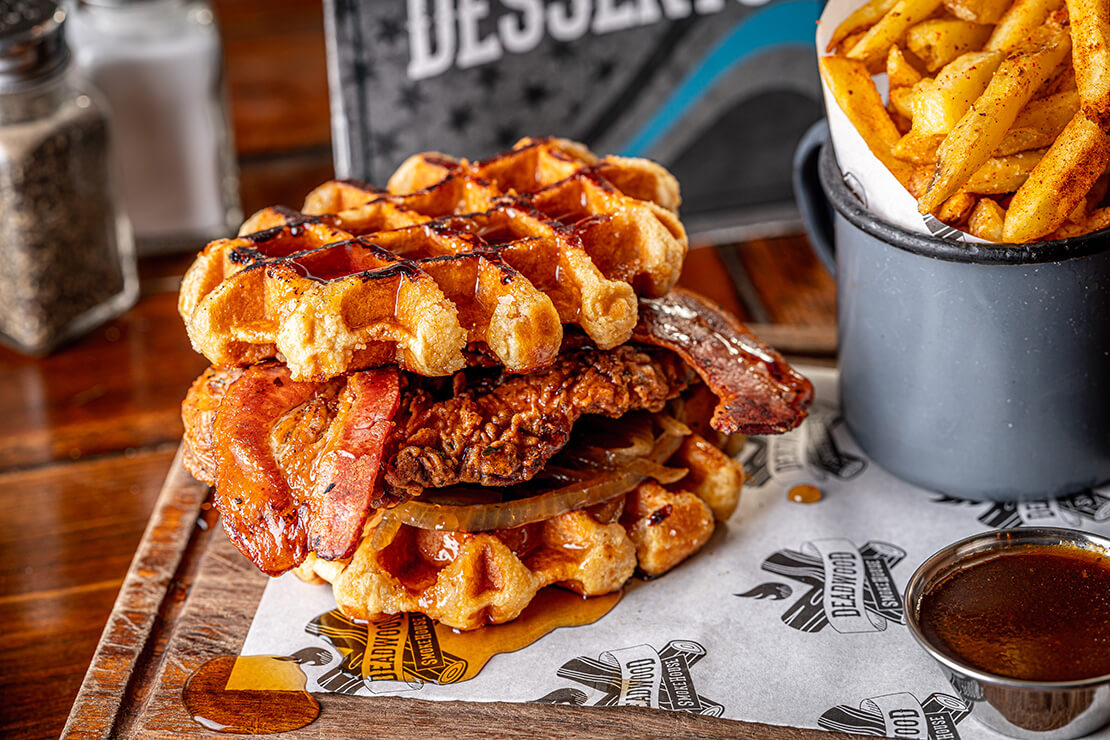
The best camera for food photography?
Offering high resolution, impressive image quality and a wide variety of useful options the Sony A7R Mark III can most likely be considered the best camera for food photography. Mirrorless, with a 42.4-megapixel sensor, the camera has 425 points of contrast detection with 399 phase-detection points.
What any professional food photographer will appreciate is the screen. Furthermore, this camera is one of the best performers in low light, which is why our Holdan Ambassador upgraded…
I started off with a Sony A-mount camera and have since moved to mirrorless with my E-mount Sony A7RIII. This camera produces stunning, crisp, detailed images which never cease to amaze my clientsNic Taylor
The best camera lens for food photography?
Samyang’s AF 135mm f1.8 FE lens is not just a great lens for portrait photography; thanks to its manual focusing system the lens can also be used to create the most beautiful food photography. During the process of food photography, the photographer has time to compose each frame, so a speedy auto-focusing system isn’t a necessity.
I have recently started to rely more on my range of Samyang lenses to get the images the client needs. My favourite Samyang lenses that I regularly use on food shoots are the AF 135mm f1.8 FE and the AF 50mm f1.4 FE. The reason why I like to shoot with these lenses is that these lenses offer great sharpness with a beautiful fall-off from the point of focus when used at a wide-open aperture. With a fast aperture, you can achieve a shallow depth of field which can help isolate a particular item in the image or lead the eye of the viewer to a specific part of the dish.Nic Taylor.
Natural Lighting
Lighting is the single most important part of the criteria for good photography, the very best light is indirect daylight- a shady spot on a sunny day is the holy grail of natural lighting conditions. It will give your food a bright, even glow, and doesn’t tint colours in the way that indoor lighting typically does.
Don’t be tempted to shoot in direct sunlight, as this tends to create a harsh image with dark, distracting shadows around the food, making whites and lights so bright that they lose any discernible texture or shape.
Nic typically uses a mixture of ambient and natural light along with a strobe and softbox. However, travelling to different venues means that he can’t always rely on a perfect setup every time. A studio strobe with softbox provides a lovely soft light which is perfect for food photography.
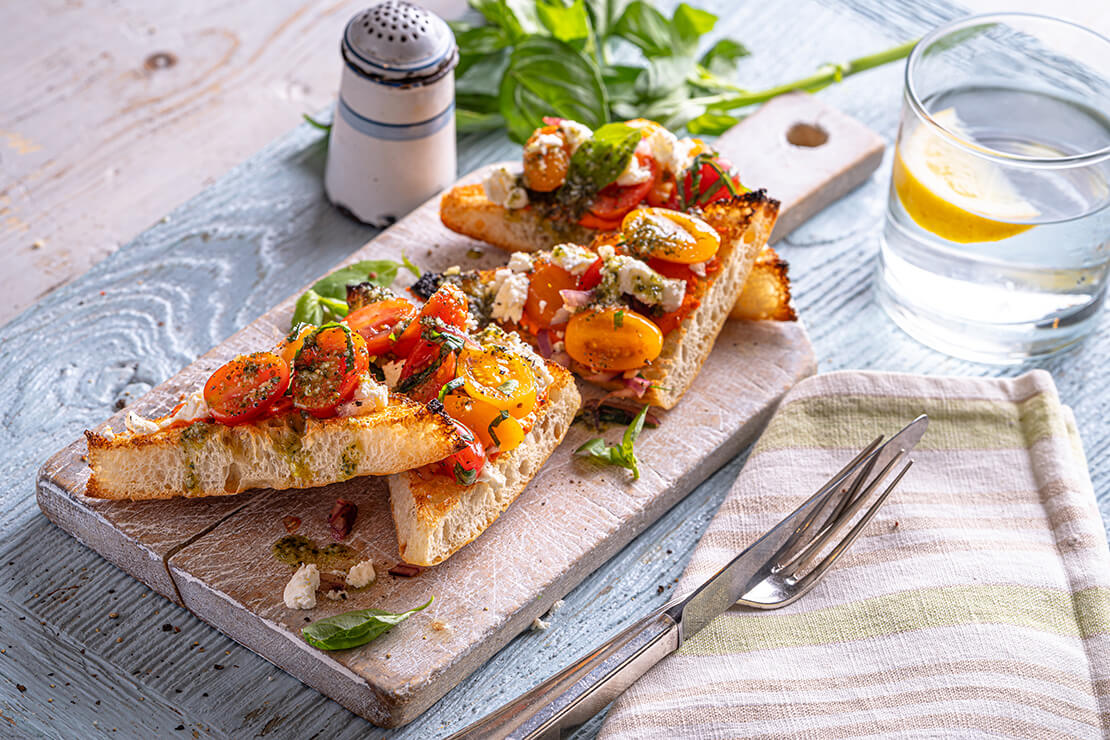
Camera Angles
The best angles for food photography really depend on how you're styling the shot. However, there are three main angles that get used.
Overhead Camera Angle
This is also known as the 90-degree angle or the ‘bird’s eye view’. This angle has become increasingly popular for Instagram and food blogs.
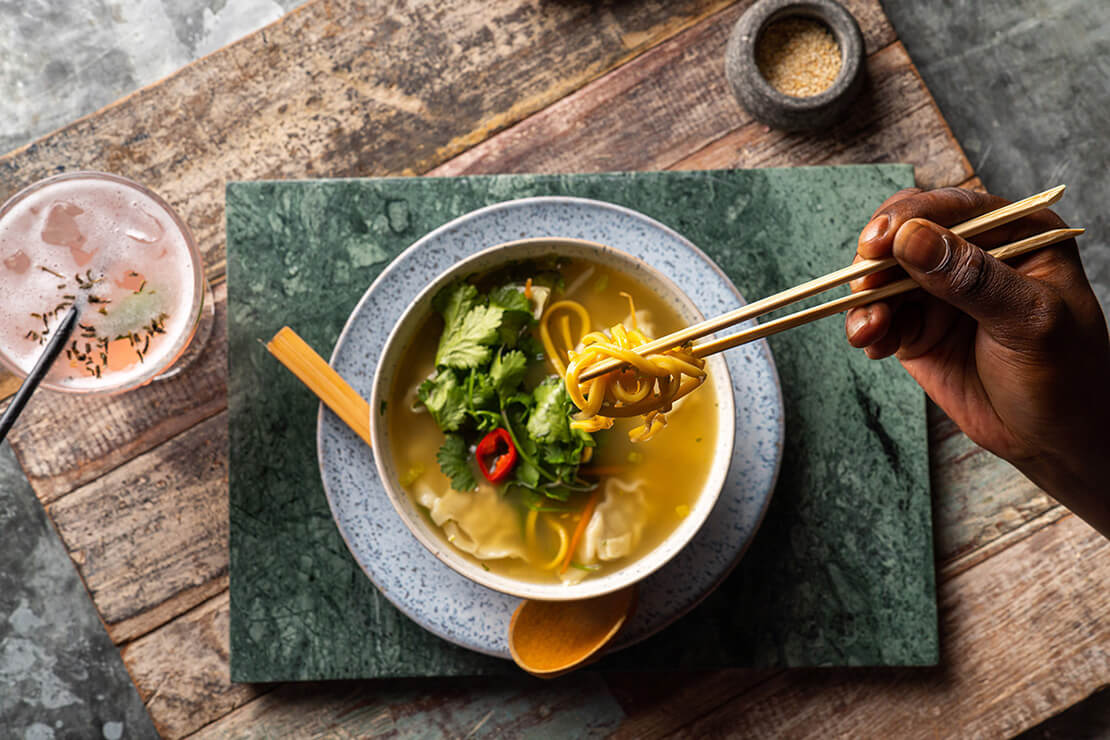
This angle is very good for fitting several elements into a scene and creating a story and focal point, like in a tablescape. You can use a variety of props, ingredients, or dishes in the frame with an overhead shot.
Dishes that look great using overhead angle:
- Dishes or beverages in tall mugs
- Layered desserts in glasses
- Cakes
- Cupcakes
- Pancake, waffle, or cookie stacks
- Soups and smoothie bowls with toppings
- Beverages in glasses
- Dishes held in hands
45-Degree Camera Angle
Typically, the 45-degree angle is the most common angle used in commercial food photography. Why is it so popular? Because it is so versatile, allowing you to show the front and surface of the dish as well as the sides moreover, it mimics what you see when looking down at a plate of food.
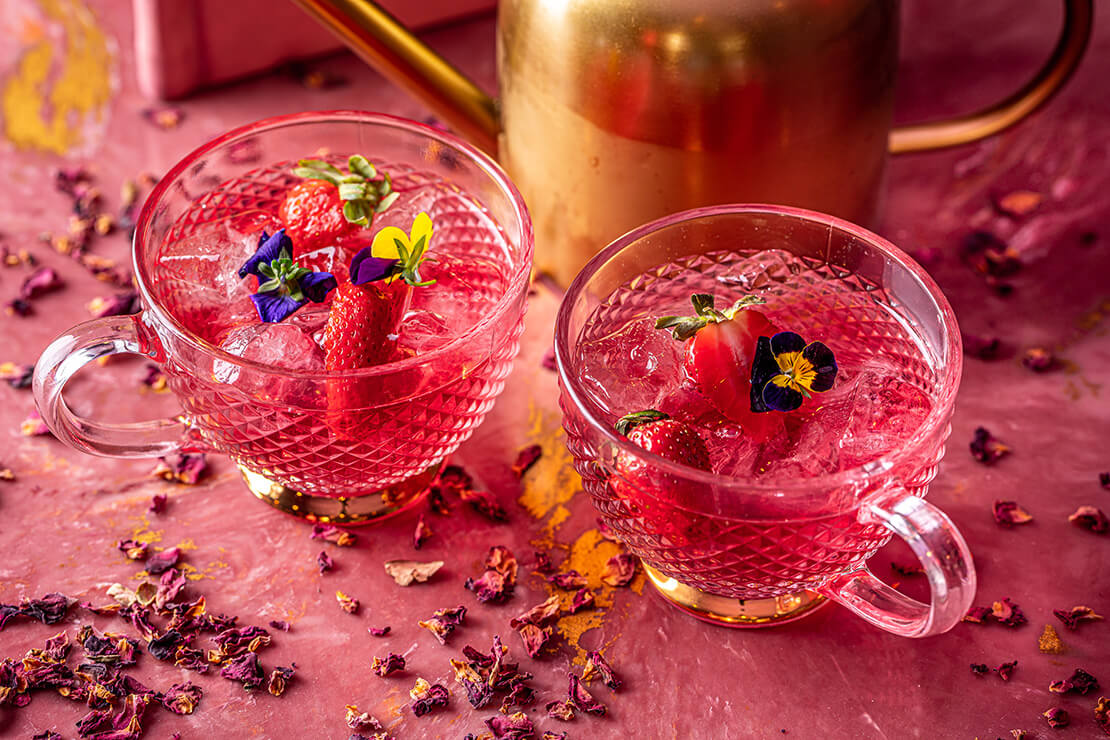
It's great for shooting food up close whenever the dish has some layers or height, but when you also want to show off the top.
Anything that you can’t see into, or in detail from straight on, is best photographed from above, or from an angle. It’s easier to make a composition this way because you are eliminating depth in the shot. The food becomes shapes and colours that you place in your frame.
If you are starting out in photography, this is usually the angle most professionals advise using, to get familiar with commercial food photography. Although this is a great way to get started and create innovative images it has become quite overused in the industry, so try and keep this type of camera angle to a minimum.
The Straight-On Shot
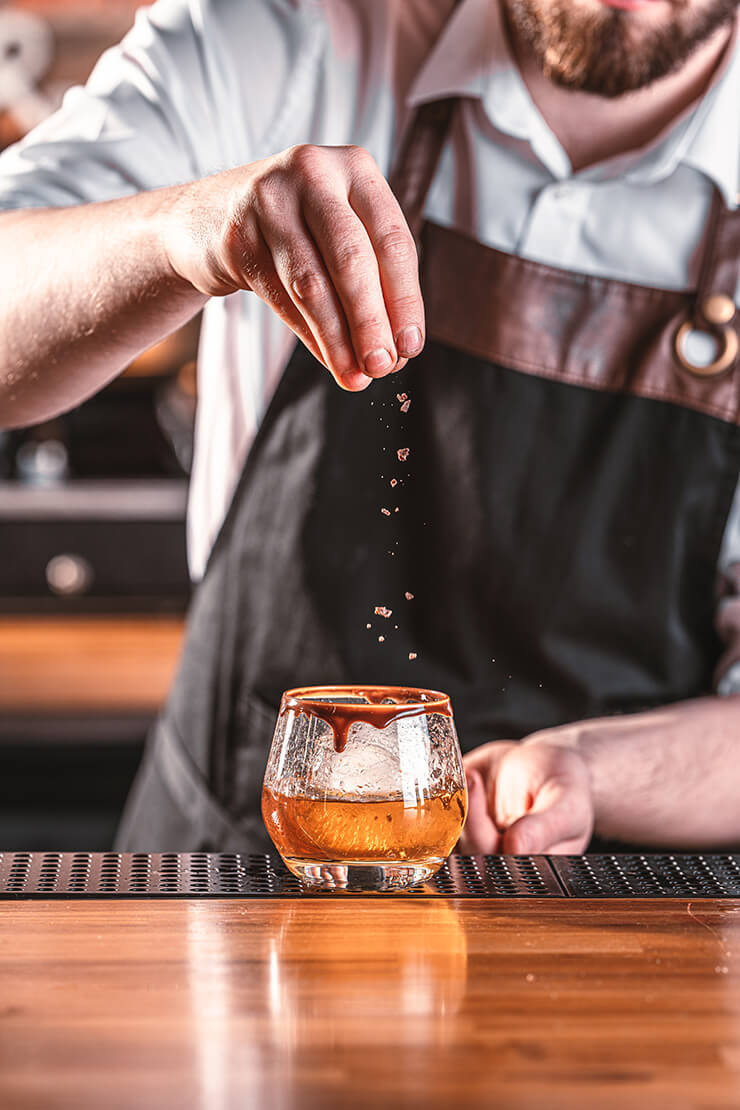
This angle works best for tall or layered dishes, where you really want to show off the height and all the beautiful layers. Or where your food is stacked, and a higher angle might not do it justice. This angle also works beautifully for action shots such as drizzles, dustings and pouring of drinks.
Think of it as being eye-level with the food. A great tip when shooting at this angle is to bring the dish to the front of the scene, then, place the props towards the back of the photo. You can off-centre the dish to achieve the rule of thirds. Keeping the finished recipe toward the front of the photo avoids confusing the eye.
Certain recipes have a strong graphic identity and will look striking when photographed from directly above, while other subjects often need to be shot from a lower angle. Try to get the composition in place in advance so that you can concentrate on the food when it’s ready to photograph; doing this means that you are not worrying about glassware, cutlery, and napkin placement when the dish is ready. Trust your instincts when a composition isn’t working.
If it doesn’t feel right, it probably isn’t. Break the set down and start again; you will most likely bring in a few elements from your previous composition, but often it’s good to re-approach an idea from a different angle.
Composition
In terms of getting the composition and point of focus perfect, Nic uses the XP 85mm f1.2 Samyang lens and occasionally a tripod. Most of his images are shot handheld, so he relies heavily on the focus peaking feature built-in to his Sony A7RIII. This feature shows exactly what’s in focus in the EVF or on screen by detecting edges of high contrast (and therefore most in focus) and displaying a red border around them.
Nic then can zoom in on the specific area that he wants to focus on and rotate the focus ring until it has perfect focus – a very easy process with a mirrorless camera. If you're using a DSLR which will have an optical viewfinder, a tripod would be recommended.
Styling
Everything in society follows some sort of trend and food is no exception. As social media has developed throughout the years the way in which food is styled has evolved. A food stylist may not always be on hand to make sure the food looks its best! However, being a part of this dynamic internet culture means that inspiration is all around.
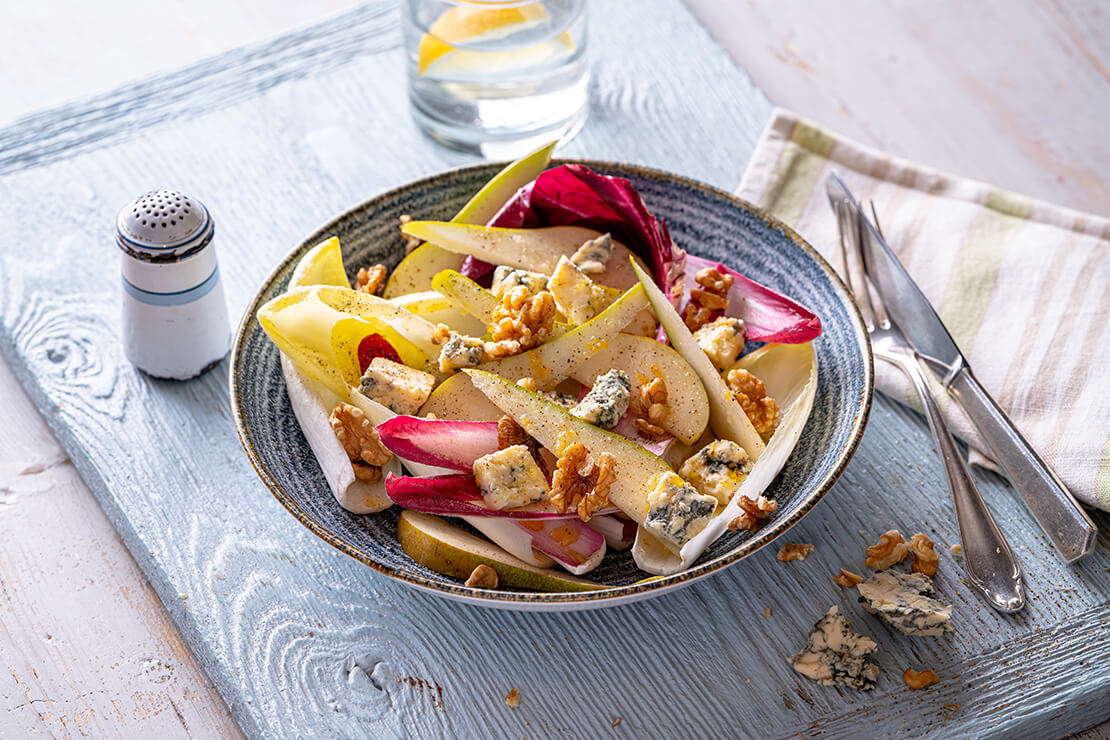
- Choose small plates and bowls – food can look better when there is a small number of chosen pieces as opposed to a mound of food.
- Style with fresh ingredients – they can be used as props and placed directly on top of the backdrop. They imply that the food was just prepared. It can also influence the mind of the viewer to the taste of the dish.
- Use layers – to create depth and add interesting focal points. Think carefully about layering your shot. For example, lay a napkin and then a plate, then a small bowl with a smoothie, and fruits on top. That’s 5 layers!
- Add texture – a very important part of the image. Using different textures can create an interesting image, like mixing the smoothness of a napkin with the roughness of a meringue. You can focus on the texture of one item with a macro shot.
- Fake water droplets using water and glycerine – there is nothing that says fresh more than droplets on a glass of iced tea or fresh fruit. To create the perfect droplets, mix half water, and half vegetable glycerine in a spray bottle and keep it in your food styling kit!
In Summary
As a food photographer it's your job to analyse what it is about a specific dish that makes it unique, enticing and captivating, and then photograph it in a way that showcases those elements. In other words, you want to capture the “wow” factor of a dish or portion of food.
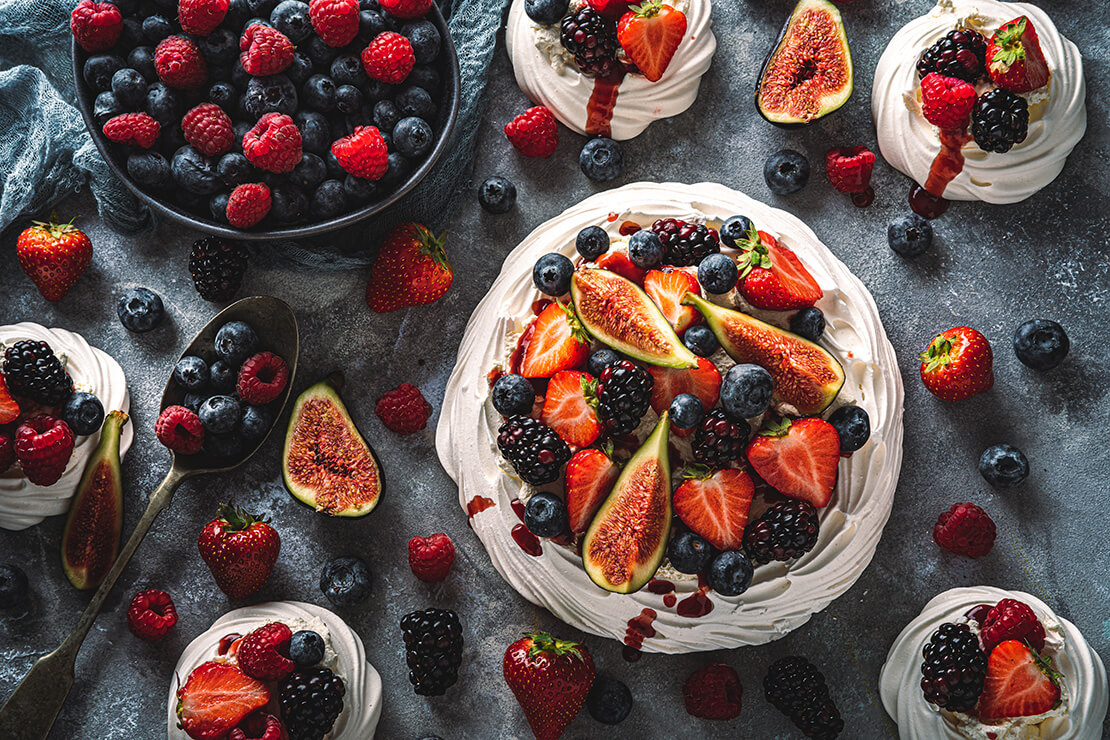
Food photography tells a story. From the backdrop and lighting to the dishes and props, all aspects of your shots share a narrative. Your content builds an identity for a restaurant, brand, or menu and how you want that audience to feel.
Despite being a terribly fastidious eater, shooting food is my favourite photography discipline. I love the detail, colour, and texture that each dish can offer and the challenges of photographing them at the right angle with the correct lighting, camera/lens combination and settingsNic Taylor
What does Nic Use?
- Sony A7RIII
- Samyang AF 14mm F2.8 FE
- Samyang AF 135mm F1.8 FE
- Samyang AF 75mm F1.8 FE
- Samyang AF 35mm F2.8 FE
- Samyang AF 24mm F2.8 FE
- Samyang AF 50mm F1.4 II FE
- Samyang AF 24mm F1.8 FE
- Samyang AF 35mm F1.8 FE
- Samyang AF 35mm F1.4 FE II
For more information please contact our Sales Desk:
+44 (0)1457 851000 | sales@holdan.co.uk.
27 Nov 2025
PTZOptics: Versatile, Professional PTZ Solutions for Every Production Environment
19 Nov 2025
Expanding Possibilities: Introducing Sonnet Technologies’ High-Performance Solutions for Apple and Professional Workflows
14 Nov 2025
Take Command of Your Creativity: Meet the Elgato Stream Deck Family
26 Sep 2025
Lumens VC-TR60A PTZ Camera Earns Microsoft Teams Certification
